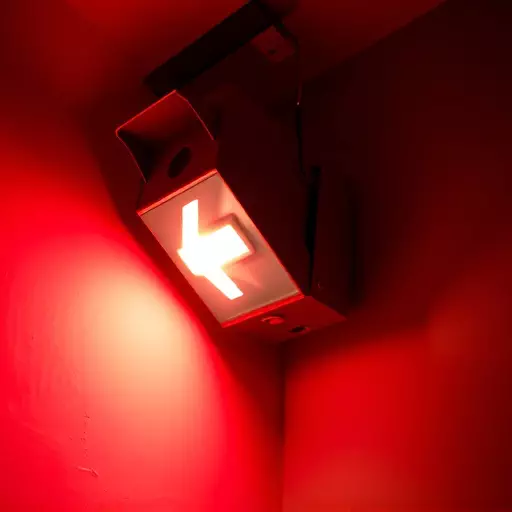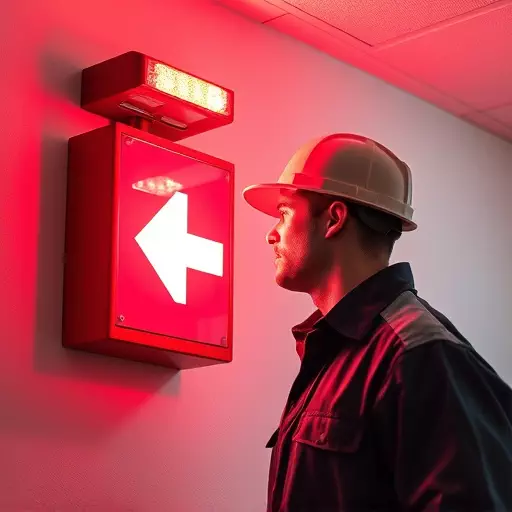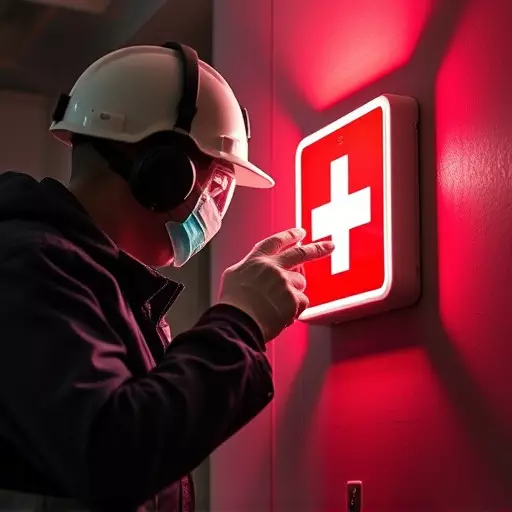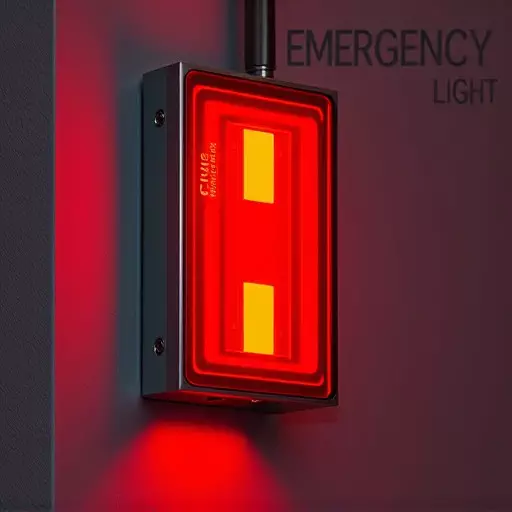Understanding and adhering to OSHA's emergency light regulations is crucial for worker safety during power outages or emergencies. Regular inspections and testing, including functionality checks, battery examinations, and control systems evaluations, are essential. Engaging professional emergency light testing services ensures compliance with critical safety standards. These services identify issues like non-compliance, faulty installations, and outdated fixtures, preventing system failures during actual emergencies. By maintaining reliable emergency lighting systems through regular testing and inspections, businesses protect employees, visitors, and assets, enhancing overall safety and efficiency. Outsourcing to experts in emergency light inspection and testing offers specialised knowledge, saves time and resources, and provides detailed reports with recommendations for improvement.
Stay safe in the event of a power outage with reliable OSHA emergency light testing. This comprehensive guide explores essential OSHA guidelines for ensuring your facility’s emergency lighting meets safety standards. From understanding key requirements to best practices for maintenance, we cover everything you need to know about emergency light inspection and testing, including step-by-step functionality checks and common issues to watch out for. Discover the benefits of outsourcing professional emergency light testing services for peace of mind.
- Understanding OSHA Emergency Light Requirements
- The Importance of Regular Testing and Inspection
- Step-by-Step Guide to Emergency Light Functionality Testing
- Common Issues Found During Emergency Light Inspections
- Best Practices for Maintaining Emergency Lighting Systems
- Benefits of Outsourcing Emergency Light Testing Services
Understanding OSHA Emergency Light Requirements

Understanding OSHA Emergency Light Requirements
In the event of a power outage or emergency, proper lighting is crucial for worker safety and facility navigation. This is where OSHA (Occupational Safety and Health Administration) emergency light testing guidelines come into play. These regulations ensure that emergency lighting systems function optimally when needed most, providing clear and consistent illumination to guide occupants safely out of buildings or hazardous areas.
Compliance with OSHA standards involves regular emergency light inspection and testing, which includes functionality testing to verify the lights turn on automatically during a blackout, as well as thorough examination of the lighting fixtures, batteries, and control systems for any signs of damage, corrosion, or malfunction. Engaging professional emergency light testing services ensures that your facility meets these critical safety requirements, safeguarding both employees and visitors in case of an unexpected power failure.
The Importance of Regular Testing and Inspection

Regular testing and inspection of emergency lights are essential components of maintaining safety in any facility or workspace. These tests ensure that emergency lighting systems function optimally when needed, which can be a matter of life and death in critical situations. Emergency light testing services play a crucial role in identifying potential issues before they become hazardous. By conducting thorough emergency light inspections and functionality testing, organizations can guarantee the reliability of their backup lighting systems during power outages or emergencies.
Such tests cover various aspects, including battery health, lamp integrity, control system operation, and overall system reliability. Regular maintenance routines help prevent costly repairs, minimize downtime, and ensure that emergency lights are always ready to provide vital illumination in an emergency. This proactive approach to emergency light inspection and testing is a best practice for facilities aiming to uphold the highest standards of workplace safety and compliance with OSHA regulations.
Step-by-Step Guide to Emergency Light Functionality Testing

To ensure the safety of your workspace, a thorough emergency light testing service is crucial. Here’s a step-by-step guide to help you assess emergency light functionality:
1. Identify all emergency lights: Start by locating every emergency lighting fixture in your facility. This includes ceiling-mounted lights, exit signs, and any other emergency illumination equipment.
2. Inspect for visible damage: Examine each light for any signs of damage, such as cracks, broken seals, or loose connections. Even minor damage can impact performance during an actual emergency.
3. Test the power source: Verify that the lights are connected to a reliable power source and that circuit breakers or fuses are in good working order. Ensure backup power is available for uninterrupted illumination during outages.
4. Check light output and intensity: Aim a flashlight at each light to measure its brightness and ensure it meets the required lumens for emergency lighting. This step is crucial, as dimly lit exits can pose significant safety risks.
5. Simulate emergency conditions: To mimic real-world scenarios, temporarily disconnect power to individual lights or sections of your facility, then test their automatic activation. Observe whether they turn on within the prescribed time frame and maintain consistent brightness during testing.
6. Evaluate battery performance (if applicable): If your emergency lights are battery-powered, test the batteries’ voltage and capacity. Replace any worn-out batteries to guarantee optimal light output when needed.
7. Document findings: Keep a detailed record of all testing results, including any issues discovered and their resolutions. This documentation is vital for future reference and can aid in identifying recurring problems.
Common Issues Found During Emergency Light Inspections

During emergency light inspections, several common issues are frequently encountered. These can range from simple maintenance oversights to more complex system failures. One of the most prevalent problems is non-compliance with the specified testing frequency. Regular emergency light testing services are vital to ensure these critical safety systems remain operational. Skipping or delaying these tests can lead to premature failure, rendering lights inoperable during an actual emergency.
Another issue is improper installation or faulty wiring, which can compromise the emergency light’s functionality testing results. Outdated or damaged lighting fixtures, batteries, and control units are also frequently discovered. These issues highlight the importance of consistent maintenance and up-to-date systems to guarantee optimal performance when it matters most.
Best Practices for Maintaining Emergency Lighting Systems

Maintaining reliable emergency lighting systems is paramount for ensuring safety in any facility. To uphold optimal performance, regular emergency light testing services and inspections should be conducted according to established guidelines. This involves periodic emergency light functionality testing to verify that all lights operate as intended during a power failure or emergency situation. By scheduling these tests with professional experts, you can ensure the system’s readiness while adhering to regulatory compliance.
Best practices include documenting test results, promptly addressing any non-compliance issues, and regularly replacing batteries or outdated equipment. Routine maintenance also encompasses verifying proper lighting level output and ensuring clear visibility during simulated emergencies. These proactive measures not only safeguard against potential hazards but also contribute to a more efficient response in case of an actual emergency, ultimately protecting lives and assets.
Benefits of Outsourcing Emergency Light Testing Services

Outsourcing emergency light testing services brings numerous advantages for businesses and facilities managers. By enlisting professional experts in emergency light inspection and testing, organisations can benefit from specialised knowledge and equipment to ensure compliance with OSHA regulations. These professionals are trained to conduct comprehensive emergency light functionality testing, identifying any potential issues or malfunctions that might go unnoticed during regular internal inspections.
This external expertise allows for a more thorough evaluation of emergency lighting systems, ensuring they function optimally in the event of an emergency. Outsourcing also saves time and resources, as specialised teams can efficiently manage testing schedules, providing detailed reports and recommendations to enhance overall safety measures without disrupting day-to-day operations.


